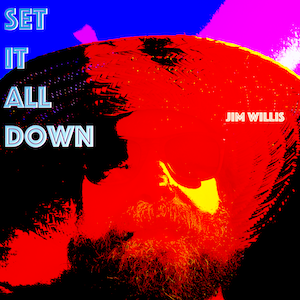The Outsourcing of Democracy
It’s not news to me that the intersection of technology, democracy, and power has reached a critical junction but I now have a much better sense of what’s at stake. Over the past couple of weeks I’ve been diving deep into Marietje Schaake’s “The Tech Coup,” watching Ronan Farrow’s “Surveilled” documentary, and following Paris Marx’s excellent podcast series on tech billionaires. I see this pattern emerging: our democratic institutions are ceding control to unelected tech leaders and their companies.
Perhaps the most alarming revelation is just how much the U.S. has outsourced core democratic functions to private industry. From voting systems to law enforcement, and now to the regulation of these technologies themselves, we have created a system where private companies aren’t just participating in governance—they’re actively shaping it. At play here is who gets to make the decisions that effect our daily lives..
The Surveillance State
I was especially put off by the privacy implications here. While Biden put out an executive order that in theory at least prevents government surveillance of citizens, the private sector has filled this gap with mindblowing tech. The proliferation of spyware tools (like Pegasus, which the FBI purchased) and the thriving data brokerage industry have lead to a surveillance infrastructure that operates with minimal oversight. When private companies can freely buy and sell personal information, train facial recognition systems on government-collected data, and deploy surveillance technology globally, we’ve essentially and collectively given a huge ok, fine, just go-ahead to the surveillance state.
One of the most insidious aspects of this “tech coup” is how insights or knowledge/learning about critically transformative technologies like AI remain locked within corporate environments. While CEOs and employees gain valuable knowledge about these systems’ capabilities and risks, public officials and citizens are left in the dark. This creates an asymmetry of power where those folks we’ve elected to make decisions about technology’s role in society are often the least accountable to the public.
Also, the role of private tech companies in international relations adds another layer of complexity. When companies like Google or Starlink provide internet access to countries during government shutdowns, they’re not just offering a service—they’re engaging in de facto diplomacy. Yes, it’s almost certainly a good thing when citizens of oppressive governments are provided Internet connectivity but the private companies but having these companies involved in international affairs raises should raise question about accountability and motivation.
Reclaiming Democratic Control
Per Schaake’s recommendations, the solution isn’t to reject technology or government involvement but to reestablish democratic control over these systems. This means:
- Creating robust regulatory frameworks for systemically important tech companies
- Building public technology infrastructure (a “public stack”) rather than relying solely on private solutions
- Extending public accountability requirements to private companies performing government functions
- Implementing meaningful transparency requirements for tech companies, especially regarding data center development (Shaake explains how companies like Amazon and MS hide behind fake company names when building out huge data centers in small town America) and algorithm audits
- Strengthening enforcement mechanisms for existing regulations
The Path Forward
I was glad that Schaake offered some suggestion on what we could do to solve the problems she presents. Granted, the page count of the solution section is dwarfed by her (excellent and detailed) explanations of the problems. Solving this isn’t about blind trust in government or wholesale rejection of private enterprise. Rather, it’s about giving citizens a broader role in technological development. We need to create spaces for public debate about technology’s role in society, elect leaders who understand these challenges, and hold them accountable for serving the public interest.
The internet was once envisioned as a democratizing force, but it’s increasingly becoming a tool for corporate profit and surveillance. If we can more collectively get our heads around what’s at stake and taking action to restore democratic oversight, we can work toward a future where technology serves the many, not just the few.



